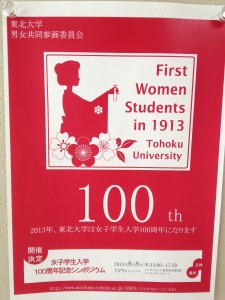conference curriculum expectations extensive reading graded readers language courses presentations school management university
by sendaiben
5 comments
Student Reactions to Extensive Reading (Pan-SIG 2013)
I was at the Pan-SIG conference this weekend, held in Nagoya (the excellent Nanzan University hosted the event). This is the video of my presentation (a little shorter than usual):
Thanks to everyone who attended.
curriculum extensive reading graded readers materials readers school management university
by sendaiben
6 comments
More thoughts on the graded reader boycott
I really enjoyed reading all the replies to yesterday’s proposal. A few people thought that calling for a boycott was a bit harsh, but it was very interesting that so far not one person has offered a reason for publishers not to print word counts on graded readers.
My personal take is that some editors are not aware that word counts are a useful and, for some teachers and programs, essential tool.
I am going to proceed with the boycott. To assist in that effort and to help connect with publishers who are not yet aware of the issue, I am going to create a website listing various graded reader series in three categories:
- A Greenlist of series that clearly print accurate running word counts on books
- A Greylist of series that do not print word counts on books, but do make full and up-to-date word count information available on the Extensive Reading Foundation website
- A Blacklist of series that do not print word counts on books, and also do not make word count information available on the ERF website
I hope this will become a useful resource for teachers and institutions when they are choosing materials for their classes and programs. The site will be maintained and updated if conditions change (ie a publisher starts printing word counts on books, or makes the information available on the ERF site).
blogging expectations life in Japan personal university
by sendaiben
4 comments
Women in Japan
I just saw this poster in my building commemorating the fact that 100 years ago in 1913, Tohoku University was the first university in Japan to admit women as students. I didn’t know that, and I am quite pleased to be working at such a progressive place (here’s hoping they’ll be progressive enough to allow me to stay on past my initial contract LOL).
This is interesting to me in two ways:
1) has women’s place in Japanese society really improved all that much in 100 years?
2) is society going to facilitate women working in the future?
It always struck me as strange that there are such structural and societal limitations on women in a democracy where they make up more than half of the electorate… but I have come to realize that a lot of the obstacles working women in Japan face come from societal expectations, often voiced by other women. Japan seems to be one of the last holdouts of the housewife mother, to an extent that I haven’t seen in Europe of the US. Specifically, I am thinking about how volunteer and community groups (like PTAs, chounaikai, sports team parent groups, etc.) make no efforts to cut working mothers any slack. If anything, they seem to pick on them, at least in my limited experience.
At the same time you get politicians making asinine comments like this and you wonder if things are going to change in the future?
Looking at Japan’s demographic future (the government projects an aging population of less than 100 million by 2050), and lack of plans for mass immigration (this is the government’s focus at the moment, but I can’t see many people applying), women seem to be the economy’s last shot…
And yet women seem to have expectations of men that are becoming increasingly unrealistic, at least according to the small sample in the link. This has been mooted as one of the main contributing factors to the low birth rate -after all, if you don’t have enough money to get married, you probably aren’t going to be having children either (or at least one would hope so).
What do you think? Is Japanese society supportive of women choosing what to do in life? Can you see it changing in the future?
business curriculum eikaiwa extensive listening extensive reading language courses materials school management self-study teaching technology university
by sendaiben
10 comments
Self-access centres in private language schools
I have always wanted to have some kind of self-access centre (room?) at Cambridge English. I feel it would offer a lot of value to some students, as well as make what we do more effective.
The room would have books, computers, and comfortable chairs. It would have nice lighting and be a quiet, pleasant place.
Students would come and use the room whenever they wanted, and regular classes would also include self-study time (students would have to spend 30-60 minutes of a 90- or 120-minute class doing self-study).
We may have the chance to create something like this this year as our current classroom is too small and there is very little real estate available in Sendai after the 2011 disaster so we have rented an apartment above the school to have classes in.
I would like to do something like this at university as well. For now, I think the best chance is to work with the library.
Does anyone have any experience of implementing this kind of system?
(photo is the Self-Access Centre at Kanda University)
EFL ES expectations high school junior high school kids online resources teaching TED university
by sendaiben
2 comments
Every Kid Needs a Champion -what a great TED talk
I saw a fantastic TED talk the other day, and wanted to share it with you. I think it is very applicable to all teachers, including eikaiwa and university.
I would love to be half as inspiring as this woman.


